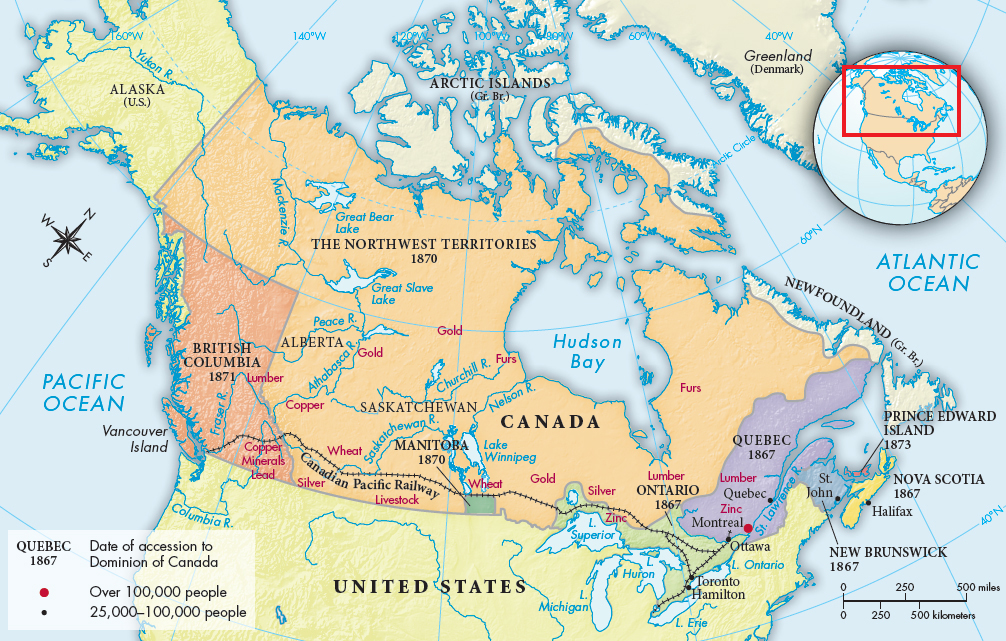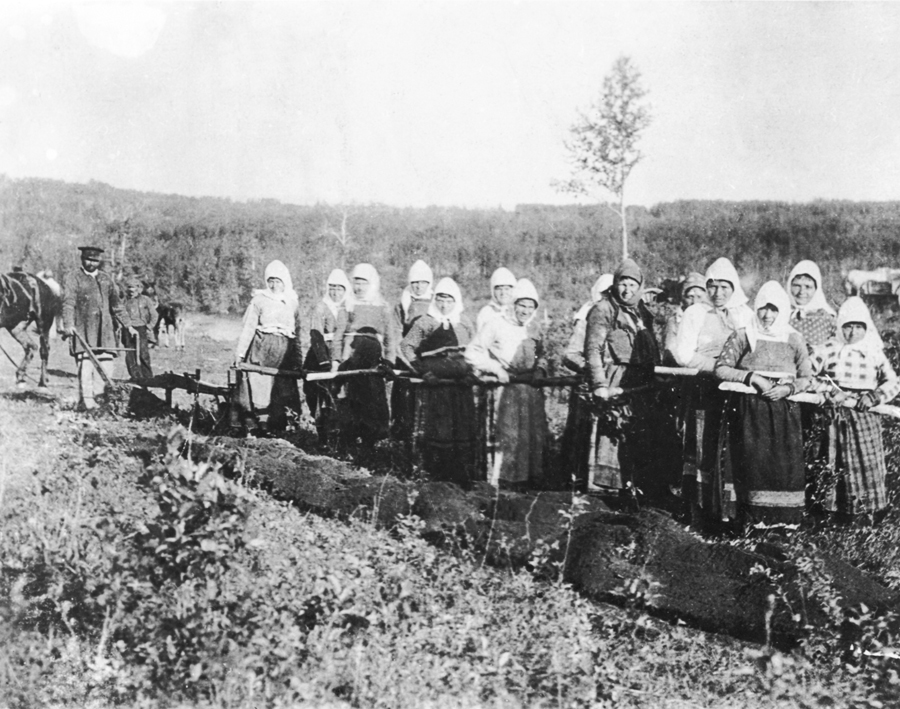A History of World Societies:
Printed Page 839
A History of World Societies Value
Edition: Printed Page 851
Immigration to Canada
Canada was sparsely populated in the nineteenth century relative to other areas of the Americas. Provinces of the British colony gained governing autonomy after 1840 and organized a national government, the Dominion of Canada, in 1867 (Map 27.3). British authorities agreed to grant the provinces political independence in order to avoid the disruption and loss of influence that followed U.S. independence, and in return the Dominion retained a symbolic role for the British monarchy. By 1900 Canada still had only a little over 5 million people (as compared to 13.6 million in Mexico and 76 million in the United States). As in the United States and Latin America, native peoples were pushed aside by Canada’s development plans, and their population dropped by half or more during the century, many succumbing to the newcomers’ diseases. By 1900 there were only about 127,000 indigenous people left in Canada. French Canadians were the largest minority in the population, and they remained different in language, law, and religion.

Immigration to Canada increased in the 1890s. Between 1897 and 1912, 961,000 people entered Canada from the British Isles, 594,000 from Europe, and 784,000 from the United States. Some immigrants went to work in the urban factories of Hamilton, Toronto, and Montreal. However, most immigrants from continental Europe — Poles, Germans, Scandinavians, and Russians — flooded the midwestern plains and soon transformed the prairies into one of the world’s greatest grain-
